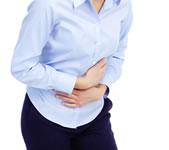Menopause for Medical Students
Essential menopause curriculum for medical students
Position Statement from European Menopause and Andropause Society (EMAS)
The menopause, or the cessation of the menstrual cycle, is the result of ovarian aging and is a natural event experienced by most women in their late 40s or early 50s. With increasing longevity the menopause can now be considered to be a midlife event. Thus managing postmenopausal health is a key issue for all health professionals, not just gynaecologists.

 Each year more than 1200 Australian women are diagnosed with ovarian cancer. The main risk factor for ovarian cancer is getting older. Over 80 per cent of women diagnosed are over 50 years of age but ovarian cancer can occur at any age.
Each year more than 1200 Australian women are diagnosed with ovarian cancer. The main risk factor for ovarian cancer is getting older. Over 80 per cent of women diagnosed are over 50 years of age but ovarian cancer can occur at any age.